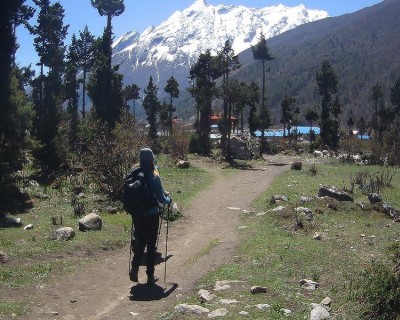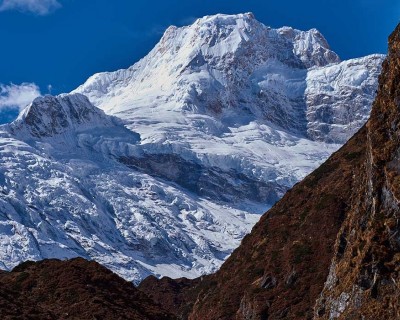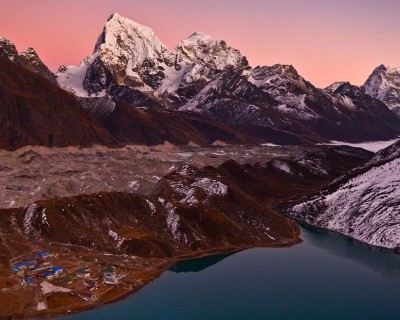Langtang Valley: The Trek Behind the Challenge
It is natural to find yourself drawn to the trails of Lantang. The warm villages can keep you pulling back to them. But behind this charm lies a challenging trek. Once your boot hits the trail, you face steep ascents and unpredictable weather. That is why you first need to understand the trail and its features. It helps you identify its challenges and the required preparations.
The Langtang Valley lies to the north of Kathmandu. You first arrive at the riverside village of Syabrubesi, driving from Kathmandu. The actual trek starts from this point.
Along the route, you can see dense forests of rhododendron and bamboo. It then climbs to the alpine meadows and high mountain terrain.
The main route of the trek then takes you to Kyanjin Gompa. A hike to Tserko Ri at 4,985m is a part of the journey. High altitudes, difficult climbs and rough trails are a constant in the process.
Hues of cultural richness are evident in the Tamang villages. That is why packages like Tamang Heritage trek are also on offer. The stone houses make up the major infrastructure of these settlements. Ancient monasteries are seen here and there. The terraced fields are a regular sight.
Expect warm hospitality in the villages where the locals also run teahouses. Their lifestyles are simple and so are the services offered by them.
This trek is a mix of adventure, culture and natural beauty. But these factors also contribute to its challenges. It makes the trek moderately difficult, especially for those new to high altitudes.
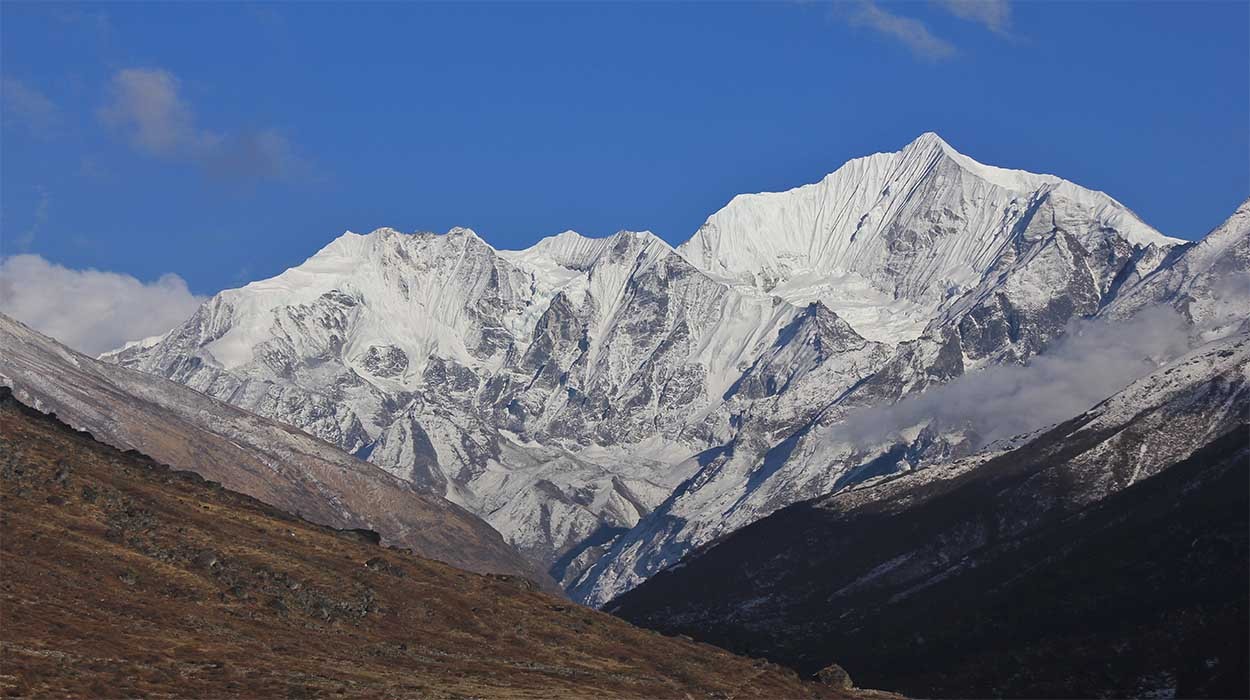
What Impacts Langtang Trek Difficulty
There are different factors that determine the Langtang trek difficulty level. The trek is graded as moderately difficult. High altitude, steep climbs and rough terrains in this route challenge the trekkers. Weather conditions add to the challenge.
Meanwhile, the condition of the accommodation facilities also plays a role in making the trek experience comfortable. Add to that a trekker’s experience and fitness level.
A breakdown of the following factors provides an answer to anyone asking: How difficult is the Langtang trek?
Langtang Altitude
Altitude is a significant factor determining the Langtang trek difficulty level. The trek takes you to the heights. You reach close to 5,000m at Kyanjin Ri and Tserko Ri. The air becomes thinner at these altitudes. The drop in oxygen level results in fatigue, breathlessness and headache. Even fit trekkers tend to feel exhausted in higher altitudes.
Some people’s pace gets reduced in higher elevations. They are required to take more frequent breaks to recover from tiredness.
Nonetheless, Acute Mountain Sickness (AMS) is something to worry about above 3,000m. The risk is high if you ascend without acclimatization days.
The cold weather of the mountain worsens the symptoms. Dehydration and fatigue are real.
The crucial point is to understand the early signs of AMS and take necessary precautions. This helps prevent serious illnesses.
Likewise, one should make sure to stay hydrated. Walking slowly is the rule. And setting aside enough days for acclimatization is a must to reduce the impact of altitude blues.
Steep Sections
The challenging sections along the trail affect the Langtang Valley trek difficulty. That is because the steep ascents and descents are some of the most demanding aspects of this journey.
You need to walk a steep trail when trekking from Syabrubesi to Lama Hotel. The path is also narrow in this section. Likewise, the route to Lantang Village from here requires you to climb steep stairs and trails. Equally challenging is the descent, especially from Kyanjin Gompa.
The heart rate increases with steep gradients.This requires one to breathe harder in the process and get tired faster. Without good cardiovascular fitness, it is not possible to walk on a steep path carrying a heavy backpack. The load on your back also adds extra strain to your shoulders and lower back.
The descents are also difficult as they can impact your knees and ankles. If you are unable to walk back with a careful and controlled pace, there is a chance of slipping or getting injured.
In such situations, use trekking poles as they can relieve stress on your joints. They also help improve stability on steep sections.
Rough Trails
Unstable surfaces and exposed crossings are some of the factors adding to the difficulty level of the Langtang trek. The stretch between Bamboo and Lama Hotel features loose rocks. The edges of the trail are also eroded.
The uneven terrains demand a good balance of your body. Ankle twists and falls are very much possible on paths with loose stones and gravel. Getting hurt can affect your entire itinerary.
If you are someone who has a fear of heights, suspension bridges might be an ordeal. One of such bridges you encounter along the route is over the Langtang Khola.
All these obstacles during the trek can slow your progress. It can be physically and mentally taxing, too.
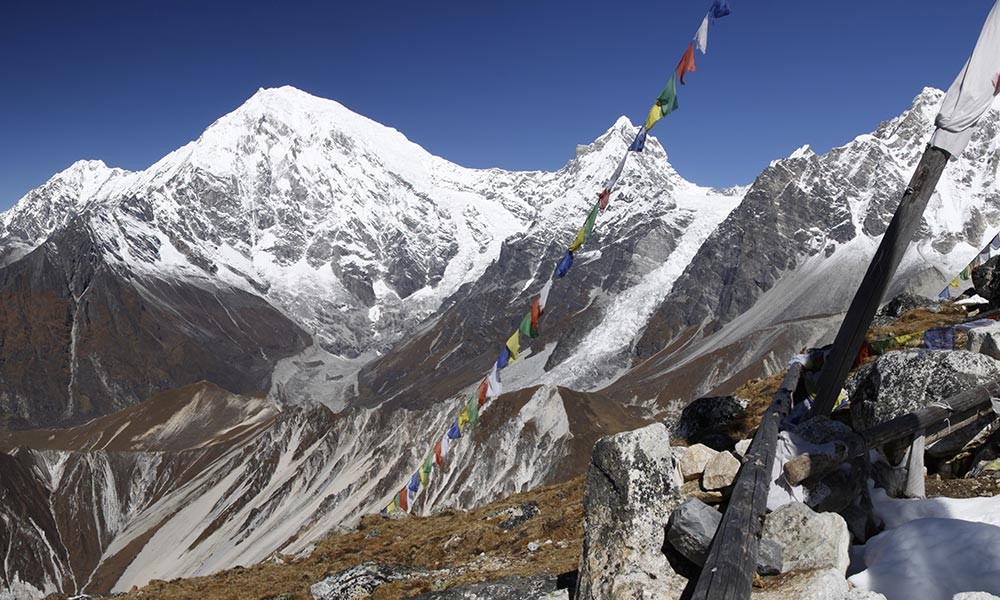
Seasonal Influences
Each season brings unique weather conditions in the Langtang region that affect how hard the trail feels. After all, weather is one of the important factors that has the ability to change your trek from challenging to demanding.
For instance, the winter season plays a major role in defining the Langtang Valley trek difficulty. There are sudden temperature drops at higher altitudes. It is more so, especially at night. If you have not opted for proper layering, then you may suffer from conditions like hypothermia. Likewise, the cold weather affects your sleep quality.
Monsoon rains can turn the trail muddy and slippery. Landslides are more common during this period. This leads to a physically exhausting experience while trekking.
Spring and autumn are generally clearer, and thus are regarded as best for trekking. But even during these seasons, strong winds can hit exposed ridgelines and high viewpoints. As a consequence, this reduces the walking pace.
The weather in high altitudes is usually unpredictable. As such, it can be challenging when the weather turns adverse. Fog, snowfall or rain in any season can reduce visibility. This is a challenge as it creates difficulty in tracing the route. It can further increase mental fatigue.
Meanwhile, you may be forced to stop the trek for a day or more in case the weather conditions turn extreme. This is a challenge if you are stopped in places like Kyanjin Gompa or Lama Hotel with basic lodge conditions and limited supplies.
Minimal Facilities
The standard of accommodation on the route might not sound that important to you when talking about the Langtang trek difficulty. But it has a significant impact.
The teahouses in places like Lama Hotel, Langtang Village and Kyanjin Gompa are simple. They are functional. But they are not made for comfort. Instead, they are there to provide basic shelter and food services.
These teahouses generally have thin walls. You will be sharing rooms with other trekkers. The heating is limited and may be available in the communal dining hall only.
Despite nourishing and filling meals, the menu gets repetitive. Hot showers, when available, require you to pay an extra fee.
If you are someone who is used to modern conveniences, the aforementioned facilities might not be enough to provide you with a sense of comfort. This can affect the quality of your sleep. Bad sleep leads to poor recovery from fatigue. It can also impact the overall morale of the trekkers.
Therefore, if you are not mentally prepared for these rustic conditions, then the trek becomes a challenging affair.
Fitness and Experience
Not all trekkers face the same level of difficulty on the Langtang trail. A trekker’s experience, among other factors, plays a major role in how demanding the trek feels.
Usually, it is the beginner hikers who tend to struggle more with steep climb . Long walking days also bother them. This is more so if they have not trained beforehand for such conditions.
Even the trekkers with limited experience in high altitude are more likely to get AMS. Faster fatigue and slower recovery are seen in those with low cardiovascular fitness.
On the other hand, if you are an experienced trekker with good fitness, you are able to adapt faster. The overall trek becomes easier, too.
That is because you need to walk for at least a week as part of this journey. The daily walking hours can range between 5 and 7 hours. This can exhaust untrained and inexperienced legs over time. The fatigue can be a source of mental challenge, too. If you are mentally unprepared for the difficulties, then the journey can be overwhelming.
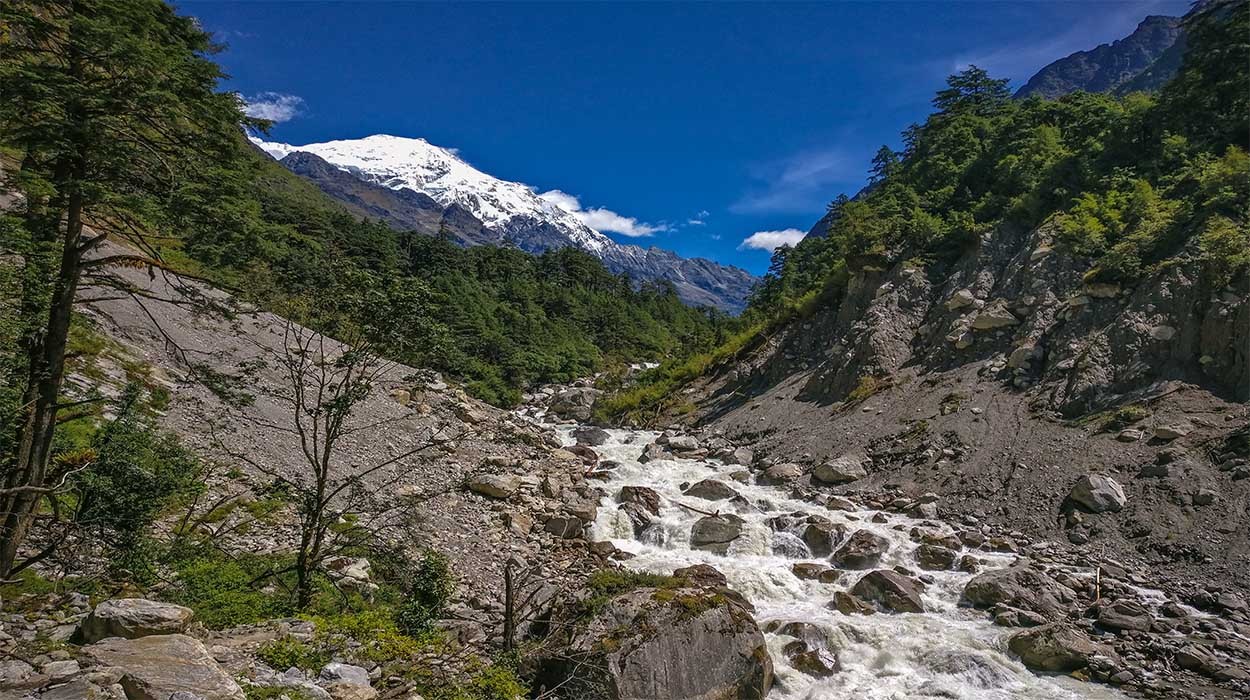
How to Deal with the Difficulty
Getting ready for the Langtang trek requires you to do something more than pack your backpack. It means being prepared to face its difficulties, too. If done the right way, you can overcome the Langtang trek difficulty.
Training Matters
The surefire way to deal with the physical challenges of the trek is fitness. That can be attained through different kinds of training.
The first training should focus on attaining cardio fitness. Activities like brisk walking, hiking and stair climbing prepare your lungs and heart for high altitudes.
Likewise, strength training of legs, core and back is essential. It helps you during the steep ascents and descents while carrying your backpack. You may choose to do squats, lunges and pushups among other activities. Stretching helps in enhancing the flexibility and balance of your body.
All these trainings ultimately build physical endurance. It is the most essential quality you should possess so that the daily mileage of the trek feels manageable to you.
Mental Resilience
The early excitement of the trek gradually fades as you move further during the Langtang Valley trek. The physical and mental exhaustion assocaited with the passage of time is responsible for this. As such, staying motivated is very important.
For that, prepare yourself to expect the discomfort along the way. This will further prepare you to handle the challenges. Also, know that such discomforts are temporary. And that these discomforts are an integral part of the experience.
The other way to keep motivation intact is to set small goals. Rather than looking at the end of the trek, think of your goal for the day. Or even think of reaching the next village. It helps you stay focused.
Nonetheless, know that you are your own motivator during the journey. Lift your mood on hard days through photography and writing journals. Or get a quick bite of your favorite snack.
Walk and Rest
Always remember the popular saying, ‘Slow and steady wins the race’, when on the mountains. This is true when you think of dealing with the Langtang trek difficulty, too.
Go slow, especially above 3,000m. The gradual and steady progress helps your body adapt to the increasing elevation.
Also, it is better to pause briefly with each step instead of rushing. This technique helps your energy. Listen to the rhythm of your body. Do not get tempted to match the speed of the groups that walk faster than you. It can be detrimental to your health if your body is unable to adapt to the altitude gain due to rushed walking.
Most importantly, schedule acclimatization days as they minimize the chances of suffering from AMS. Despite all the precautions, you might be unwell due to altitude sickness. To deal with it, get a prior understanding of its serious symptoms. If you feel any difficulty, ask for help immediately.
Hydration and Personal Care
Drink water regularly. You should do so even if you don’t feel thirsty. This is to prevent yourself from getting dehydrated due to cold weather and altitude.
You may get blisters when walking. Treat the wounds on time so that they do not turn into an infection. Use high SPF sunscreen and lip balm to guard against UV radiation at high altitude. Carrying a personal first aid kit is always advantageous.
Go with a Guide
Your trek guide is your safety net for different reasons. Firstly, they are trained to recognize symptoms of altitude sickness. They can act quickly to help if you show any warning signs.
When things do not go as planned, they are ready to provide you with the needed emergency support. This includes arranging for medical help or even evacuation.
Meanwhile, arranging for logistics like booking teahouses and meals is a part of their job. So, they can save you from unnecessary hassle during the journey so that you can benefit from a comfortable trek as much as possible.
Packing Rules
Packing the essentials is important for managing the Langtang Valley trek difficulty. You should carry with you a set of multiple layers of clothing and durable trekking boots. First aid kit and water purification tablets are mandatory. Do not forget the trekking poles as well as snacks.
Good gear means handling cold nights, strong sun and rain without much stress. Layering of clothes keeps your body warm. A proper hydration system, along with energy snacks, is a good way to fuel your body. It prevents you from getting exhausted quickly.
These things keep you comfortable not only on a physical level. They help in your mental resilience, too.
Choose the Right Agency
Choosing a professional trekking agency can help manage the Langtang trek difficulty. Marvel Adventure is one such agency that provides professional guides to monitor your health and journey. We arrange for lodgings and meals in advance. Also, we can make clear plans for evacuations in case of an emergency. So, if you want to enjoy and smooth and comfortable trek to Langtang, you can contact us.
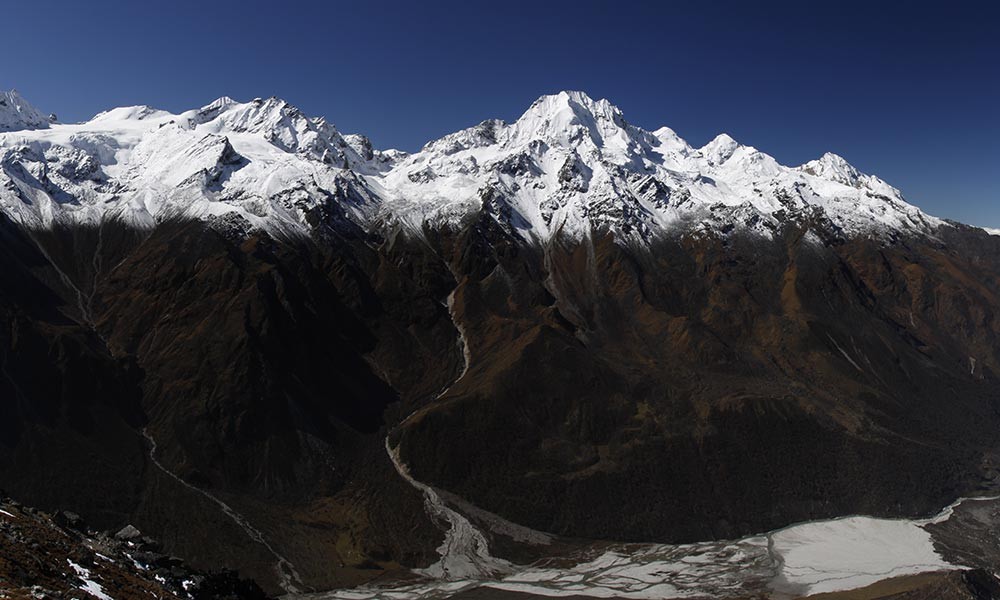
FAQs
What level of difficulty should I expect while trekking on the Langtang trail?
The trek has been defined as moderately difficult.
Can beginners complete the Langtang trek?
Absolutely. Many first-timers finish the trek successfully. But for that, one must have a good base level of fitness. Prior training and acclimatization are mandatory.
What is the hardest part of the Langtang Valley trek?
Most people find it difficult to climb to Tserko Ri. They also consider the climb to Kyanjin Ri tough. These areas feature steep slopes. Also, you go near 5,000m where the air is thin.
How serious can altitude sickness get on this trek?
It can get serious if you skip acclimatization and opt for climbing too fast. Otherwise, you might show mild symptoms after 3,000m. They are manageable.
What role does a guide play in managing the Langtang trek difficulty?
Guides handle your logistics. They take care of you and provide help in case of AMS or other health issues. They keep you safe during the journey.







